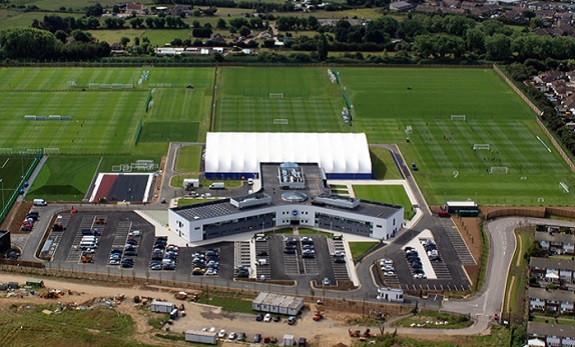
Ruben Reddy, the architect, made for fascinating listening at the recent SoccerEx convention debate on the future of sustainable stadia. At one point Reddy was probably grateful to be in the safety of the Manchester Central exhibition hall, rather than one of the nearby pubs on Deansgate. In the name of sustainability, he asked the audience to consider the possibility of Manchester United and Manchester City sharing a stadium! While this is not likely to happen any time soon, there are of course precedents for manageable ground sharing; demonstrated by city rivals such as AC and Inter Milan in Italy, and Bayern and 1860 Munich in Germany. Perhaps an even more radical proposal was Reddy’s vision that stadia for major international football tournaments should all be temporary. As someone that has been involved in the sustainability side of football for a long time – from working on projects for Chelsea, Arsenal and Southampton, to being one of the first people to push the use of organic compost for pitches at the likes of Brighton & Hove Albion – I know that organisations in football will support sustainable business decisions, as long as they are sustainable financially as well as environmentally. The examples are everywhere. The AAMI Stadium in Melbourne, designed by Cox Architects, was built with around half the amount of steel usually needed for the construction of its cantilevered stands thanks to a special panelised façade. It also gathers in the region of 500,000 gallons of rainwater each year, by way of a relatively simply designed rainwater collection system. It’s not just the giants that can play their part, though. The first football ground I recall hearing had implemented a rainwater collection system of that nature was the National League South’s Dartford FC, back in 2006. They piped rainwater from the ground and its surrounding plaza to use for watering the pitch, meaning they didn’t need to take any out of the mains. Dartford also installed solar panels on their clubhouse roof, and that’s an idea which has been demonstrated on a much bigger scale. When it comes to international football, Chinese Taipei may not be much bigger than Dartford are on the English pyramid, but their 55,000-seater national stadium, Japanese designed, is the first in the world to generate most of its power through solar panelling. When you think about the amount of energy gobbled up at weekends by club stadiums, maybe this is more realistic for an international ground with less regular matches, but there is nothing to stop clubs from utilising solar power. There are undoubtedly architectural policies that can make a difference. And we should applaud the clubs that are ticking all the boxes in terms of waste management and energy conservation by their responsible day to day management of stadia – that goes for clubs up and down the football ladder. Take Forest Green Rovers, at The New Lawn they operate LED floodlights, have a pitch which uses organic compost, generate over 10 per cent of their power through solar panels, and have completely plant-based catering, having taken all meat of their menu. The end of the meat pie is not likely to be a popular decision at the big grounds, but imagine how much energy 10 per cent of consumption at The Emirates or Old Trafford equates to. Finances might hold back many of the more radical sustainability initiatives in football, but there are many positive steps that can be implemented without breaking the bank.



